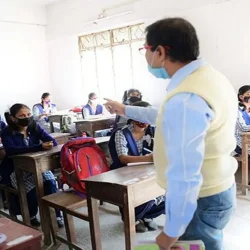Record monsoon rains have caused widespread flooding in Punjab, one of India’s most productive agricultural regions, destroying crops, livestock, and homes while threatening food security across the nation.
Unprecedented Agricultural Damage
Fields across Punjab are submerged, leaving paddy crops brown and wilted. The air is heavy with the smell of rotting crops and livestock, illustrating the magnitude of the disaster.
Experts warn that climate change, combined with poorly planned development, is increasing the frequency and intensity of floods and landslides in the region.
According to India’s national weather department, rainfall in Punjab surged by almost 66% above average in August, resulting in over 400,000 people affected and at least 52 deaths.
Impact on Farmers
The villages of Toor and Lassian in Gurdaspur district were among the hardest hit. Farmworker Surjan Lal described water rising up to 10 feet overnight, leaving residents stranded on rooftops for nearly a week.
Farmer Rakesh Kumar reported total losses of leased and owned farmland, along with destroyed crops and livestock. He warned that winter wheat sowing could be delayed due to silted fields and limited access for heavy machinery.
For landless laborers like Mandeep Kaur, the situation is dire. Her house was destroyed, forcing her to sleep in the courtyard under tarpaulin, facing hazards from flooded lands and snakes.
Threat to India’s Food Security
Punjab is India’s largest supplier of rice and wheat, contributing significantly to the government’s food security program that supports over 800 million people.
The floods, combined with punitive US tariffs on basmati rice, threaten to further impact agricultural exports and put pressure on domestic food availability.
Government Response
Prime Minister Narendra Modi announced a relief package of $180 million to support affected farmers and communities. However, recovery is expected to be challenging because Punjab had opted out of the federal crop insurance scheme, citing high costs and historically low risk due to its robust irrigation network.
Key Takeaways
-
Record monsoon floods devastated farmland in Punjab.
-
Over 400,000 people affected; at least 52 deaths reported.
-
Rice and wheat crops destroyed, threatening national food security.
-
Government announces $180 million relief package for affected farmers.
-
Climate change and poorly planned development exacerbate flood risks.













